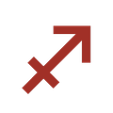Nuzhat Kazmi's Islamic Art: The Past and Modern (New Delhi: Roli Books, 2011) gives a clear framework for studying Islamic art, with plenty of illustrations. Beautiful synergies, patterns, colors, vibrations, fields, designs and craft are enclosed within.
The first chapter covers Islamic painting, which is not universal because of an Islamic distaste for icons. The author quotes Mughal Emperor Akbar (1556-1605), challenging those who reject paintings: "There are many that hate painting; but such men I dislike." He went on to say that painters are vessels of Allah. The above is an example of a painting from Islamic South Asia, circa 1615-1620 (now in the British Museum). Even today, there is a diversity of opinion about paintings within the Islamic world.
Islamic Art: The Past and Modern does well to show the geographical diffusion of Islamic art, from the Middle East to South and East Asia, from North Africa to Spain and Portugal, and into West and East Africa, as well. There is great diversity even between areas of Turkey, Iran, Iraq, Egypt and Syria-Lebanon.
The development of various types of calligraphy is one of the many great achievements in Islamic art. Here are two examples from the year 1537 of Marvels of Things Created and Miraculous Aspects of Things Existing. More examples can be seen of Islamic Medical Manuscripts at the US National Library of Medicine at this link.
Islamic Art: The Past and Modern next proceeds to consider textiles, pottery, ceramics, glass, metal, architecture and the modern world, with an overview of Islamic Dynasties and a glossary of Islamic and Arabic language terms. To be continued.
Today's Rune: Fertility.
The first chapter covers Islamic painting, which is not universal because of an Islamic distaste for icons. The author quotes Mughal Emperor Akbar (1556-1605), challenging those who reject paintings: "There are many that hate painting; but such men I dislike." He went on to say that painters are vessels of Allah. The above is an example of a painting from Islamic South Asia, circa 1615-1620 (now in the British Museum). Even today, there is a diversity of opinion about paintings within the Islamic world.
Islamic Art: The Past and Modern does well to show the geographical diffusion of Islamic art, from the Middle East to South and East Asia, from North Africa to Spain and Portugal, and into West and East Africa, as well. There is great diversity even between areas of Turkey, Iran, Iraq, Egypt and Syria-Lebanon.
The development of various types of calligraphy is one of the many great achievements in Islamic art. Here are two examples from the year 1537 of Marvels of Things Created and Miraculous Aspects of Things Existing. More examples can be seen of Islamic Medical Manuscripts at the US National Library of Medicine at this link.
Islamic Art: The Past and Modern next proceeds to consider textiles, pottery, ceramics, glass, metal, architecture and the modern world, with an overview of Islamic Dynasties and a glossary of Islamic and Arabic language terms. To be continued.
Today's Rune: Fertility.













3 comments:
Why art then? Why art now?
My Name Is Red, a grand novel, is the only Orhan Pamuk novel I've got. It's sort of about art then.
I gasped audibly when I clicked over to your site and saw book's cover. The colours and shapes were so unexpectedly (at least to me) beautiful. Thanks for making my day!
Erik-gotta be honest, art is truly in the eye of the beholder!
Post a Comment